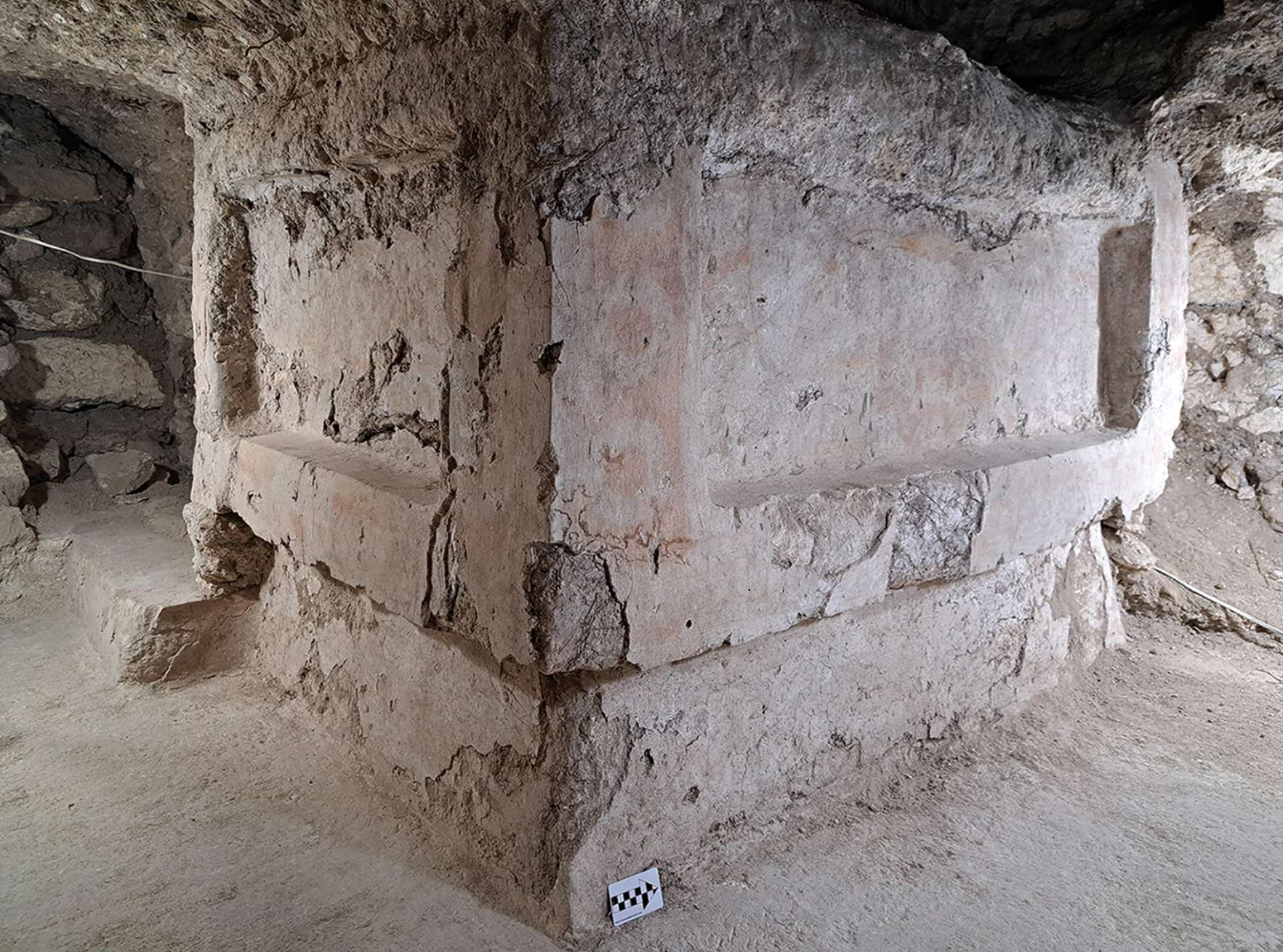

An ancient limestone altar has been discovered in northern Guatemala’s Tikal National Park. The find illuminates the deep cultural ties between the Maya and Teotihuacan civilizations in ancient times. Guatemala’s Ministry of Culture and Sports made the announcement.
The altar, found inside a residential structure, could date back more than 1,500 years. Measuring about one meter tall, just over a meter wide (3.3 feet for both height and width), and nearly two meters (6 and-a-half feet) long, it features artistic elements linked to Teotihuacan, including human-like figures with red tassels painted on the surrounding walls.
Expedition leader archaeologist Lorena Paiz said the altar was likely used for ritual sacrifice. The remains of three children under the age of four were found beside it.
“The Teotihuacan residential complexes were houses with rooms and in the center altars; that’s what the residence that was found is like, with an altar with the figure representing the Storm Goddess,” Paiz said.
Teotihuacan, located near modern-day Mexico City, was one of the largest cities in the ancient world between 100 B.C. and A.D. 750. The city was home to over 100,000 residents and its iconic Temples of the Sun and Moon and spanned eight square miles.

The city’s influence stretched beyond central Mexico, even before its mysterious collapse centuries before the Aztecs’ rise.
Tikal, a major Mayan city about 525 kilometers north of Guatemala City, was once a dominant power in the region. Known for its towering temples and political rivalry with the Kaanul dynasty, Tikal also served as a cultural crossroads.
The altar’s design aligns with recognized features of Teotihuacan residences, reflecting the central altars’ key spiritual role. Paiz said this discovery confirms that Teotihuacan influence reached Maya territory through trade, shared customs, and beliefs.
Researchers spent more than a year and a half excavating and analyzing the site before announcing the find. The location remains protected and closed to the public for preservation.

Edwin Román, director of the South Tikal Archaeological Project, said the discovery highlights political and spiritual ties between Tikal’s Maya rulers and Teotihuacan elites between A.D. 300 and 500.
María Belén Méndez, an archaeologist not involved in the project, said the shared practice of sacrifice offers a window into how both cultures viewed the cosmos.
“We see how the issue of sacrifice exists in both cultures,” she said. “It was a practice; it’s not that they were violent, it was their way of connecting with the celestial bodies.”
Officials say the find reinforces Tikal’s role as a cosmopolitan city and a cultural exchange center in ancient Mesoamerica.
